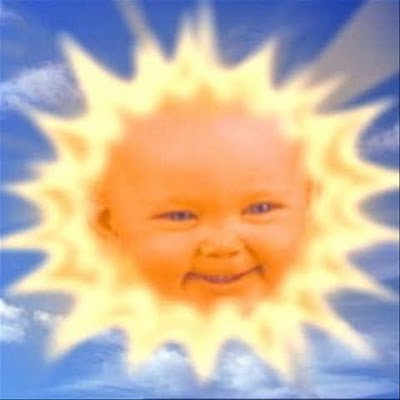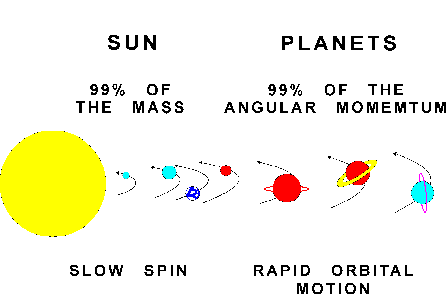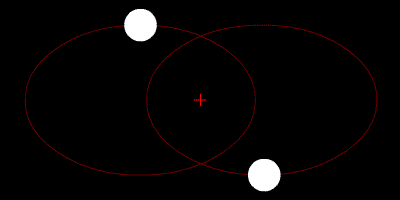 |
| How was I born? |
And if you would like basic overview of Jeffrey's alternative to Nebular Hypothesis called Stellar Metamorphosis, please visit http://www.integratedpost.com/2012/12/a-comprehensive-summary-of-stellar.html
It is understood that the Nebular Hypothesis is well accepted and understood by many scientists, but that is not a reason to ignore criticisms of the theory. If you think the Nebular Hypothesis still stands after this analysis, then please make a comment in the section below explaining the answers to these questions for me.
------------------------------------------------------------------------------------------------------
7 Facts Contradicting the Nebular Hypothesis

1.) Older stars are still mislabeled by mainstream as planets/exo-planets.
They orbit the opposite direction their host star is rotating.
The backwards orbits completely falsifies any notion of a coherent one direction disk forming Earth sized objects. An illustration is provided below of these backwards orbits.
If the entire solar system, Sun and planets, were created from the same spinning cloud, then there is no physical reason for why certain planets have orbits opposed to the Sun's, such are Venus and Uranus. As well as planets observed in other solar systems.
------------------------------------------------------------------------------------------------------
2.) The system TYC 8241 2652 had an alleged proto-planetary disk. This disk glowed
brightly in the infrared when discovered in 1983, but as of 2 ½ years ago has stopped glowing in
the infrared.
This system falsifies the idea that disks create Earth sized objects because the proto-planetary disk model absolutely requires that the disk be present for millions of years, meaning that the duration of the infrared event was much shorter than expected.
This is because the infrared glowing is simply the result of a series of giant collision events that create trillions of tons of star shrapnel known as asteroids, meteorites and small moon-like objects that are
undifferentiated.
Therefore TYC 8241 2652 is not evidence of star/planet formation but star/planet destruction caused by objects clearing their path for more stable orbits.
Mainstream has this process backwards and is exceedingly clueless because their definitions are
unnecessarily complex and arbitrary.
The collision events recorded as infrared light is NOT a proto-planetary disc, as was once suggested, since such a disc would have existed for millions of years in order to create planets.
What the Scientists actually observed was the initial destructive push of solar wind, clearing the heliosphere after the birth of star TYC 8241 2652, not collisions between proto-planets.
------------------------------------------------------------------------------------------------------
 |
| This makes it easy to understand how the planets were "caught" by the sun, rather than created with it. |
momentum loss of the Sun.
If the nebular model were correct and all the material in the solar
system was formed from a giant spinning gas/dust cloud, then the Sun should have the majority
of the angular momentum. This means it should spin much more rapidly. The mathematical models have failed to explain this.
If the sun was formed from a massive nebular collapse, then, like an ice-skater pulling their arms in during a spin, the Sun ought to be spinning extremely rapidly. Much more so than it already is, it seems. The loss of angular momentum cannot be accounted for and thus we have one more reason to scrap the nebular hypothesis.
------------------------------------------------------------------------------------------------------
| This is a hypothetical proto-planetary disc. |
compositions and sizes. This falsifies the proto-planetary disk model.
In a spinning body such as the hypothetical proto-planetary disc, the matter would become more or less evenly differentiated, with heavy elements collecting on the inside and lighter ones pushed out. This means that within the same "layers" of the disc, there ought to be the same elements, meaning that planets formed in the same region ought to have more or less the same elemental composition.
------------------------------------------------------------------------------------------------------
5. The science establishments have found what they would consider to be an “exo-planet”
without a host star. Their current definition of brown dwarf and “exo-planet” will be confusing because of arbitrary definitions.
This discovery actually falsifies their definition of “planet” because planets absolutely need to orbit a star. Stellar metamorphosis corrects this issue.
They just found an older star that is de-ionizing its interior and undergoing Marklund convection also
known as differentiation.
According to the establishment Nebular hypothesis, planets and stars alike are different objects formed from the exact same dust cloud. This makes it confusing to distinguish planets from exo-planets from "brown dwarfs", ect. Also, finding "planets" without host stars calls the whole Nebular Hypothesis into question.
-------------------------------------------------------------------------------------------------------
 |
| Isn't it easy to understand that the Sun picked up these objects on it's path around the galaxy? |
host stars. The proto-planetary disk model absolutely requires that the objects orbit in mostly
circular orientations. These discoveries falsify the proto-planetary disk model.
If the solar system's exoplanets were formed by a collapsing Nebula, then the orbiting objects would be more or less uniform in their paths. Vastly different orbitals suggests that each celestial body was "picked up" by the host star long after birth. The sun and the rest of the solar system were not born together.
------------------------------------------------------------------------------------------------------
7. Multiple sets of binary stars have been found to have orbital periods of less than 5
hours.
This falsifies the gravitational accretion/proto-planetary disk model for solar system
formation because these stars should have already squeezed together to make one single star.
According to the mainstream dogma solar systems have a central star which centralizes the
majority of the material that forms the theorized disk surrounding it, therefore these stars should
not be separate, but should have combined into a single larger star. It is suggested to the reader to
realize that gravity theory is a failed theory
as it is not a force and cannot accrete material what so ever.
These stars simply formed in different areas of the galaxy and took up orbit
around each other further along their life spans.
This is perhaps the most compelling argument against the establishment model. If a "gravitational collapse" caused a massive nebula to start spinning and creating objects, then the center should contain the vast majority of the matter in the system. However, we often find binary star systems which completely contradict this notion. Under the gravitational model, the binary stars would have been squished together during the star's birth event.












How does a star "pick up" another star on it's travels..what mechanism explains the attraction of objects to other objects..be it my feet to the ground..or an exo planet to a star..?
ReplyDeleteIf you'd like more information on gravity, there is a video explanation by Bill Gaede linked under the Theories tab above.
DeleteThat is not the best question. Assuming the stars are attracted to one another first leaves out other possibilities. For instance, if they are attracted to each other why are they separated by billions upon billions of miles? See what I mean? If they are attracted to each other why are not stars just a clump of grapes?
Delete"Assuming the stars are attracted to one another first leaves out other possibilities"
DeleteThere is tension between every atom in the universe, this is what is called GRAVITY.
" For instance, if they are attracted to each other why are they separated by billions upon billions of miles?"
Galaxies?
Objects form and then break apart, this is Mother Nature's eternal dance. It never started and will never end... it just exists.
Newton said gravity is objects with mass will attract each other. Einstein said anything with mass will bend the 'fabric' of space-time, so objects move toward each other because of this bend.
ReplyDeleteJust because objects are attracted to each other doesn't mean they have to clump together. Pluto is attracted to our Sun, but its not going to crash into the Sun.